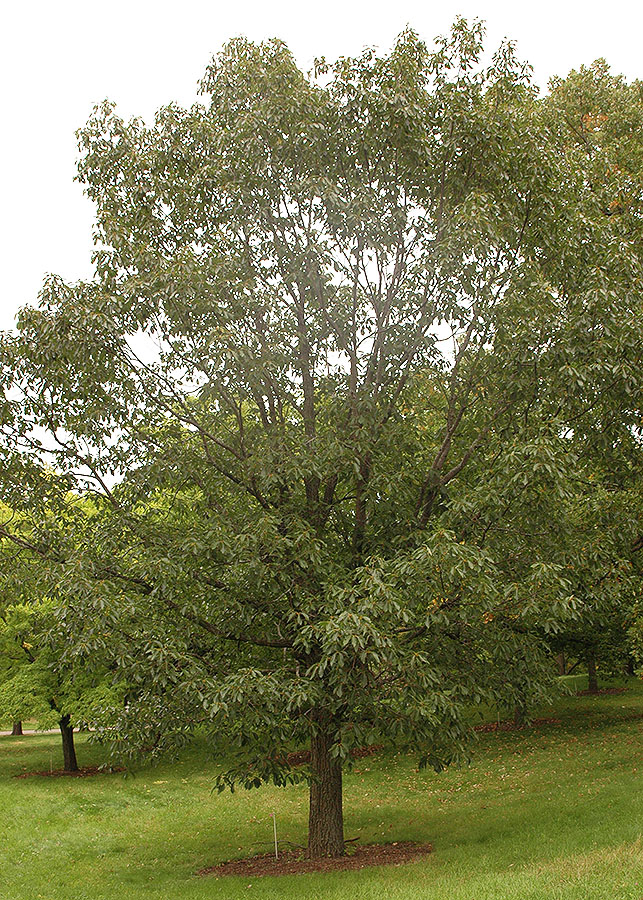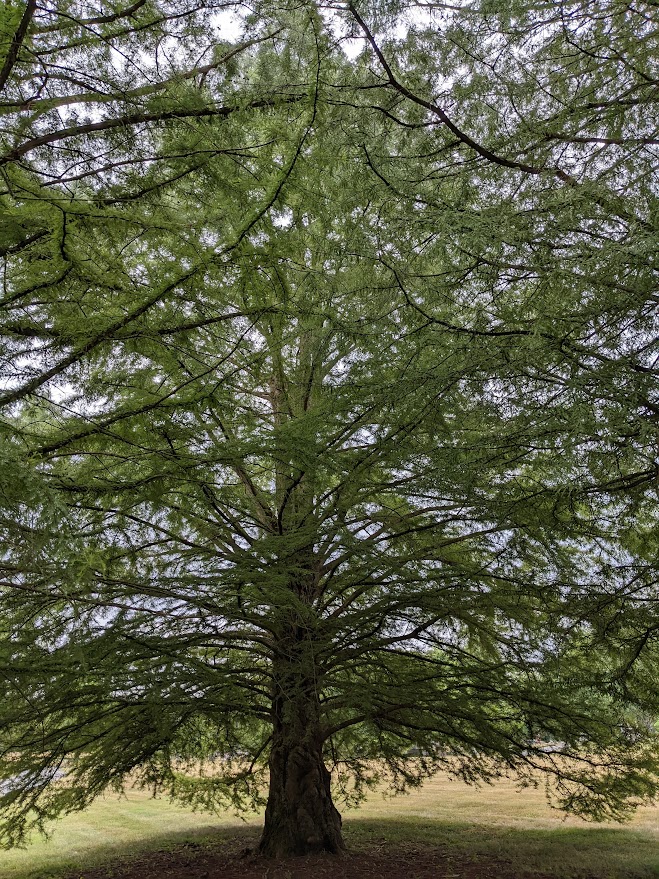Free Tree Seedling Species Information

Chestnut oak is considered a medium to large tree that can range in height from 50-100’ with a reach of 50-70’ if open-grown and a trunk diameter of 2-4’ at maturity. This tree is a member of the white oak group and boasts a broad canopy and dark brown to black bark that is rigid and deeply furrowed. This oak is generally found naturally in dry upland sites. This tree is known to grow rapidly into a large tree with the capacity to reach 100’ height on “good soils” and 50’ on “poor soils,” thus making it adaptable to urban soil conditions.
These trees perform well in moist, well-drained soils full of sunlight and can survive on very dry sloped sites. This species will not perform well in wet soils.
This tree produces shiny acorns that are utilized by a wide range of wildlife and grow 1-1.5” in length. Due to tannins in the acorns, it remains in the landscape and is an important mid-winter survival food.

Bald cypress is one of only two Indiana native deciduous conifers (cone-bearing trees that drop their leaves in fall). Although its native range is southern Indiana, it is winter-hardy to the northernmost counties in Indiana. Bald cypress is a large canopy tree that is capable of reaching 130’ tall in ideal conditions. Generally they reach 50-80’ tall and 20-30’ wide with a trunk diameter that can reach 3-5 feet at maturity.
This species thrives in shallow swamps, bottomlands, floodplains and in rich upland soils. We have found it very tolerant of urban soils and compaction as long as it is watered well into establishment in drier sites.
Bald cypress is conical in form with light green colored foliage that turns to a vibrant copper/rust color before dropping each fall. The fruit are round, golf ball-size cones that are held singly and in clusters of 2-3 and are generally persistent. Because of its form, this species may be more compatible with narrower plating spaces.
A big thank you to the IDNR Division of Forestry Vallonia Tree Seedling Nursery for producing high quality tree seedlings and for the species information.

